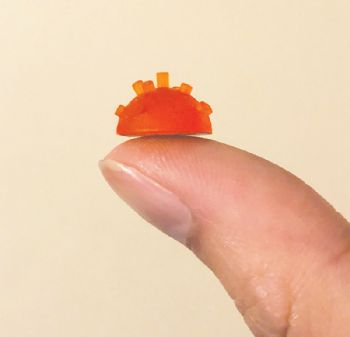
A miniaturised version of a musical instrument that could be used to improve the quality of medical images has been manufactured at the University of Strathclyde (
www.strath.ac.uk).
Researchers have created a miniaturised pipe organ — based on the wide range of pipes seen in the full-size instrument — that is designed to improve images (such as those of foetuses) from scanners by broadening the range of frequencies used to emit sound waves.
The researchers have demonstrated its ability to produce these frequencies and have used a 3-D printer to create the best designs for the organ. The study has been published in the journal IEEE Transactions on Ultrasonics, Ferroelectric, and Frequency Control.
Tony Mulholland, head of Strathclyde’s Department of Mathematics & Statistics, said: “Musical instruments have a wide variety of designs, but they all have one thing in common — they emit sound across a broad range of frequencies, so there is a treasure trove of design ideas for future medical imaging sensors waiting to be discovered.
“Around 20% of medical scans are performed using ultrasound.
“The scanner creates images by emitting sound waves with a frequency that lies above human hearing.
"The scanner operates at a single frequency, and this accounts in part for the relatively poor resolution that one sees in ultrasound images.
"If we had a scanner that could emit waves across a broad range of frequencies, this would provide a marked improvement in the imaging capability.”